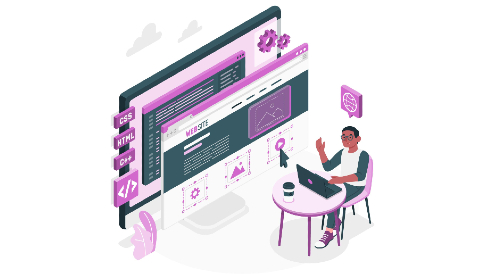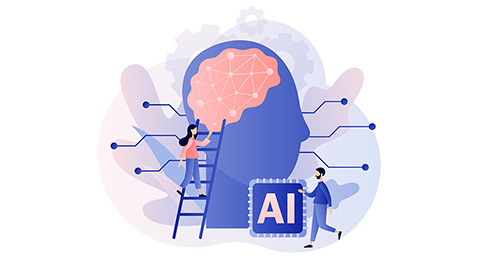8 Reasons to Redesign Your Website
A website redesign isn’t just changing fonts, colors, or images. It allows you to rethink your site’s content, structure, and user experience. The redesigning level varies significantly based on your business goals and needs. A website redesign can be a complete rebuild, simple rebranding, or an entire template or theme revamp. While redesigning your site is important, determining when or why you need it might not be easy. Discussed below are eight reasons to redesign your website.
1. Your Current Website Is Outdated
An outdated site is among the top reasons to redesign your website. Users are highly likely to abandon dated websites due to poor functionality, unattractive layout or content. To determine if your website design in Auckland is outdated, look out for the following signs:
- Poor mobile user experience and non-responsive design: Users using mobile devices to visit your website may experience a broken layout. Additionally, the website may not adapt to different screen sizes, necessitating the need for a redesign
- Site performance problems and slow loading times: Slow-loading web pages increases bounce rates. Since users expect fast access to information, they consider slow loading sites to be performing below current standards
- Lack of social media icons: It demonstrates that your website is not integrated with the latest digital practices, missing out on potential traffic and engagement opportunities from social media platforms
- No CTAs: The absence of CTA buttons (which are meant to direct users toward a desired action) can lead to a lack of direction and confusion for users, suggesting the need for revision
- Low conversion rates and high bounce rates: Dated signs often miss crucial factors persuading users to convert through complex checkout processes or unclear CTAs. In addition, bounce rates escalate with outdated web designs, communicating to search engines that your content isn’t relevant or engaging
An obsolete website design can result in SEO penalties because of failing to comply with the latest search engine guidelines, reducing visibility on SERPs. If your website shows any of these signs, redesign it to incorporate the most recent technologies and design trends.
2. Your Website Is Slow
Users find slow-loading websites quite frustrating and can result in visitors leaving your site, ultimately impacting your site’s performance and search engine rankings. Some of the elements that contribute to a slow website include:
- Unreliable servers
- Caching isn’t enabled
- Heavy media files
- Your site isn’t optimized for mobile
- Third-party plugins
- Outdated CMS
- Too many website ads
Redesigning your website allows you to address these concerns and enhance speed and performance. Making your site load faster offers an excellent user experience and a good possibility of ranking high on SERPs. If your website loads slowly, revamp it to ensure it runs at optimal speed.
3. High Bounce Rate
When sites have high bounce rates, it implies that users will leave without taking the desired action or engaging with the available content. This should be a matter of concern as it suggests that you cannot capture and retain your audience’s attention. If your website isn’t optimized for mobile, has poor-quality content, and has poorly optimized meta titles and descriptions, visitors will likely abandon it.
You may also experience high bounce rates due to page errors, long page load times, and poor user experience. Understanding the reasons for your site’s high bounce rates and undertaking a website redesign can help you address all the concerns effectively, boosting the website’s overall performance.
4. Your Site Isn’t Mobile-friendly
For a website to reach and engage with a broader audience, it should be mobile-friendly. If your site isn’t mobile-optimized, it means you’re missing out on a substantial number of prospective customers and visitors. Mobile-friendly sites provide excellent user experience, fast load times, and easy navigation, which help retain and convert users. Search engines also prioritize mobile optimization in their rankings. Failure to cater to mobile users can negatively impact your website’s traffic and visibility.
With most internet browsing now happening on mobile devices, it’s crucial to ensure your business website is fully functional and responsive on every screen size. Prioritizing your site’s mobile friendliness optimizes your online presence while enabling you to remain competitive in the digital scene.
5. Your Web Design Doesn’t Reflect Your Brand Identity
Your site is among customers’ primary contact points with your brand. Your web design should effectively reflect your brand’s identity to:
- Create a memorable impression
- Build loyalty and trust
- Drive conversions
If your web design doesn’t reflect your brand identity accurately, it creates mistrust and confusion. When redesigning your website to mirror your brand identity, ensure it:
- Aligns with your messaging: Your brand’s message should be cohesive, clear, and come from your company’s core strategies and values. It summarizes the distinct value you offer your clients and the features that make your business stand out
- Reflects your brand’s feel and look: Visual consistency enables you to establish your brand’s recognition. Inconsistent brands are confusing and considered unreliable. Ensure the visual styles, fonts, and colors on your site look like those on your social media accounts, business cards, business logo, and other forms of branding
- Reflects your unique voice: Your business’s online voice is usually the first voice potential clients hear. Utilize your web copy to communicate your brand’s personality and values to customers through word choice and tone. An inconsistent or mismatched tone of voice leaves your audience confused regarding what to expect from your brand
6. Your Site Is Hard to Navigate
A hard-to-navigate site can drive away prospective customers and minimize your online presence’s effectiveness. Complex, cluttered website navigation systems can make it hard for visitors to find the required information, resulting in frustration and, eventually, a negative brand impression. Redesigning your site enables you to create a more user-friendly and intuitive experience for your website users. This can enhance the overall user experience and boost the possibility of converting users into customers. A site redesign can involve:
- Simplifying your navigation menu
- Enhancing your website’s search functionality
- Optimizing your web design and layout to make it more user-friendly
These changes can result in an easy-to-navigate website that enables you to achieve your business goals more effectively.
7. Outdated Website Content
Outdated website content can keep prospective customers from engaging with your business because it poorly reflects your brand’s relevance and credibility. A site that hasn’t been updated in a while can give the notion that your brand doesn’t prioritize remaining current or is no longer active.
Redesigning your site and keeping your content up-to-date boosts your online presence while enhancing your brand image. Updating your website with new, relevant content helps with SEO (Search Engine Optimization), making it easier for prospects to find your site when looking for related topics.
8. Your Site Isn’t SEO-optimized
Failure to optimize your website for SEO means your online presence might not reach its maximum potential. Since SEO is vital for sending organic to your site and enhancing it’s visibility, failure to optimize for SEO means it may not rank high in SERPs. This implies that prospective customers might not find your website. It can significantly impact your brand’s success and growth. A website redesign that prioritizes applying SEO best practices can help resolve this concern. The revamp may include:
- Optimizing your web content
- Fixing broken links
- Enhancing website speed
- Ascertaining mobile-friendliness
In addition, conducting keyword research and integrating targeted keywords throughout your site can help boost search engine rankings. Redesigning your website for SEO boosts your online visibility and drives more organic traffic.
Endnote
A website redesign is crucial for your brand’s growth and success. Understanding the reasons to redesign your website, including an outdated website, a slow site, a high bounce rate, outdated website content, and more, can help you determine if it’s a wise move.




Leave a Reply